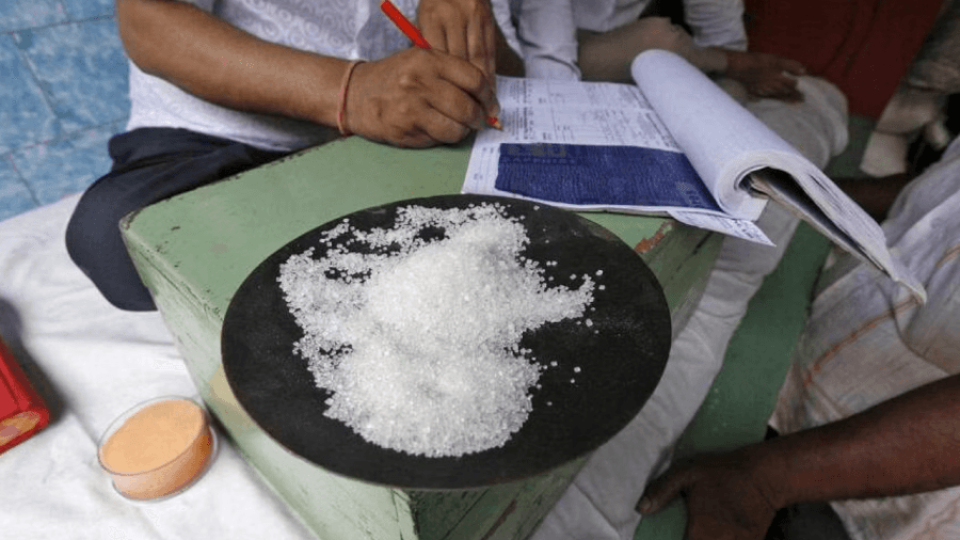May 17, 2023
NEW DELHI – Sugar prices across the world could soar further due to a decline in production in India – the commodity’s largest producer – and export restrictions imposed by the government.
Global prices have already been rallying near their highest level in more than a decade, with a pound of raw sugar currently trading at nearly 26 US cents, up from around 17 US cents in May 2013.
The Indian government has capped exports for the ongoing sugar production cycle, which runs from October to September each year, at 6.1 million tonnes.
Trade analysts The Straits Times spoke with said a second tranche of exports for the current cycle is unlikely.
“If any new permission for exports is granted, that will be in December 2023 after factoring in primary production estimates for the new season from October 2023 to September 2024,” said Mr Praful Jagjivandas Vithalani, the All India Sugar Trade Association’s founder chairman.
According to the association, 5.7 million tonnes of the permitted quota have already been exported, with the remainder expected to be shipped out by May 25.
The anticipated restriction on exports once the cap has been reached implies further Indian shipments will be sent out only in 2024, with this absence of a key supplier in the global market coming at a time when production has also declined in countries such as China and Thailand.
India exported a record 11.2 million tonnes of sugar during the 2021-22 season, with consignments sent to countries like Indonesia, Malaysia, Bangladesh, Sudan, Somalia and the United Arab Emirates.
The country was expected to produce around 38.5 million tonnes in 2022-23, but this estimate was lowered to 36.8 million tonnes by the Indian Sugar Mills Association (Isma) on April 26.
These figures include sugar diverted for ethanol production, indicating that the actual production estimate of the sweetener is only 32.8 million tonnes against an annual domestic consumption of around 27.5 million tonnes.
The fall in output is largely a result of weather-related disruptions in Maharashtra, a key sugar cane-growing state.
Mr Aditya Jhunjhunwala, Isma’s president, said production there has fallen by around 15 per cent in the current production cycle.
“The rainfall was good overall, but it came in bursts, and it was not evenly distributed,” he told ST.
As at April 15, India’s sugar production stood at 31.1 million tonnes for the current season that began in October 2022, a year-on-year dip of 5.4 per cent, with many mills closing early due to limited sugar cane availability.
Sugar cane grown in India has a 12- to 18-month cropping cycle. It is mostly planted between January and March, and harvested from December to March the following year.
The crop requires evenly distributed and timely monsoon rainfall during June and July, followed by a dry period for ripening, but this traditional weather pattern has become erratic due to climate change.

The fall in output is largely a result of weather-related disruptions in Maharashtra, a key sugarcane-growing state. PHOTO: AFP
The fall in sugar production in India has heightened concerns of rising prices during the summer months that run roughly from April to June, when demand peaks because of the increased consumption of cold drinks and ice cream.
Cooling prices is a key priority for the government ahead of several state elections in 2023, as well as the general election scheduled for April and May 2024.
In April, ex-mill sugar prices shot up by 300 rupees (S$4.80) to 3,590-3,750 rupees a quintal in Uttar Pradesh.
There has been speculation that the government could even restrict exports pending under the allocated 6.1 million tonnes quota.
The Mint newspaper reported on May 8 a new plan to curb shipments of around 85,000 tonnes yet to leave Indian shores.
The government did not respond to a request for comment from ST, but industry analysts suggested such a move is unlikely given the limited quantity involved.
The supply crunch in India comes as global sugar prices are on an upswing. They attained their highest level since 2011 at end-April, when raw sugar traded at 27 US cents per pound. They have since eased marginally, but inflationary pressures remain active.
In May, the FAO Sugar Price Index rose 17.6 per cent from March, its highest level since October 2011, due to reduced production expectations and outcomes in India, China, Thailand and the European Union caused by dry weather conditions.
A slow start to sugar cane harvesting in Brazil, along with higher international crude oil prices, which can increase demand for sugar cane-based ethanol, was also flagged as one of the factors.
Mr Rahil Shaikh, managing director for Meir Commodities, a sugar trading company in Mumbai, said he expects a global deficit of about three million tonnes for the 2023-24 season given the shortfall from suppliers such as India and Thailand.
“I think the world market is tight at the moment, and it is overly dependent on Brazil’s forthcoming production. If there is a supply issue there, prices can go even higher.”


